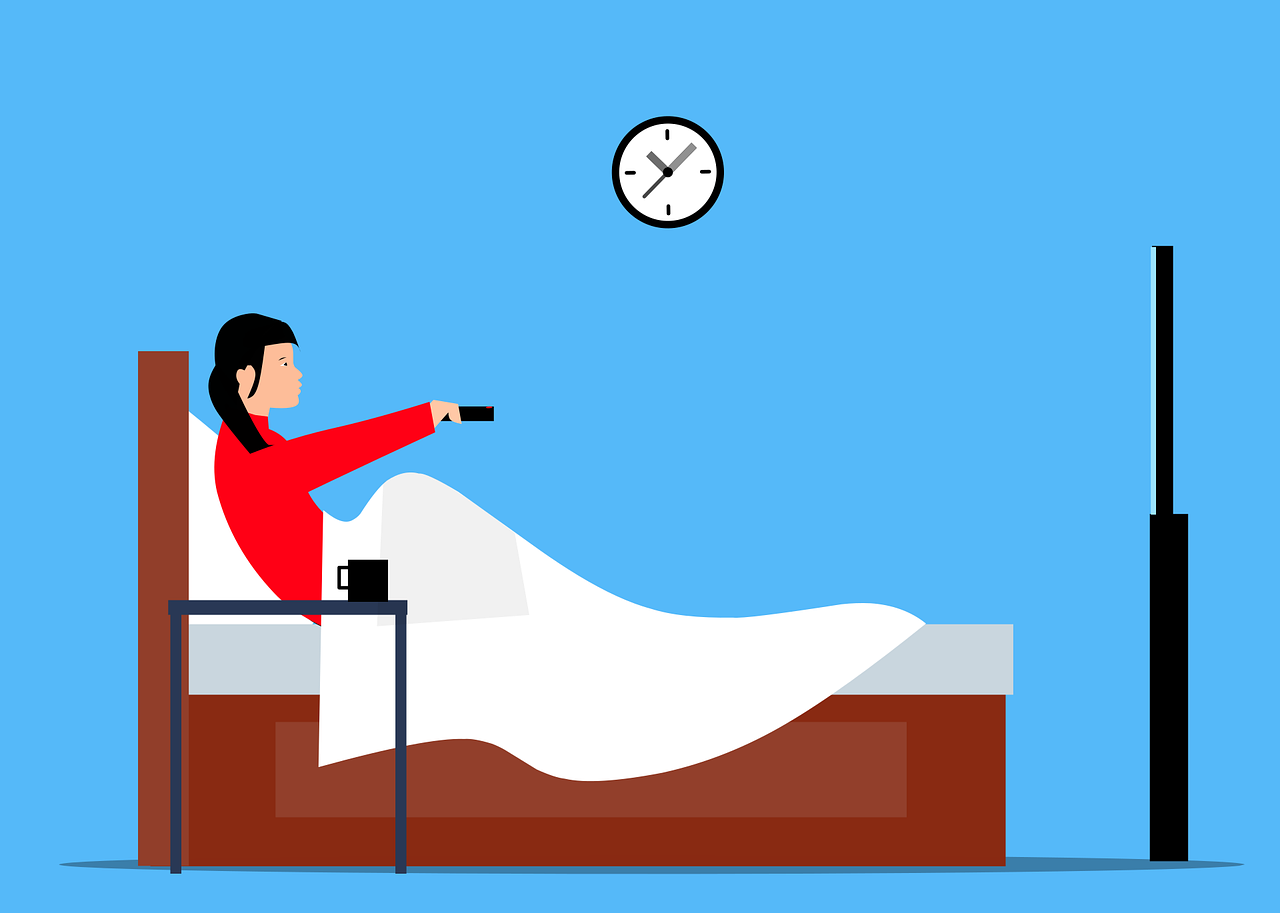Sleep and Spine Health: How Proper Alignment Improves Rest and Well-Being
The Overlooked Connection Between Sleep and the Spine
Every night, while the body slows down, the spine is busy working. It’s hydrating discs, rebalancing muscle tone, and relaying messages between the brain and every organ. When that system functions well, you wake refreshed, focused, and ready for the day. When it doesn’t, you may wake up sore, stiff, or exhausted, despite a full night’s sleep.
Sleep problems are rarely just about the mattress or bedtime routine.
Often, they relate back to spinal alignment and the way the nervous system regulates rest. More than 80% of adults experience spinal pain at some time, and those with chronic neck or back tension are up to twice as likely to report poor sleep quality, according to the American Chiropractic Association (ACA).
During November’s National Sleep Comfort Month, it’s worth exploring a key truth: your spine doesn’t just support your body while you’re awake—it supports your ability to rest, recover, and heal while you sleep.
The Physiology of Rest: How Sleep Repairs the Spine and Nervous System
Sleep is more than physical stillness. It’s an active neurological state where your body performs vital repairs that can’t occur during waking hours. During deep sleep (slow-wave stages), tissues regenerate, inflammation decreases, and the nervous system recalibrates.
Your spine is central to this process. Between each vertebra sit fluid-filled discs that act like shock absorbers, cushioning your body through movement. Throughout the day, gravity compresses those discs slightly. At night, as the spine rests in a horizontal position, those discs reabsorb fluid—essentially “recharging” to support you the next day.
If the spine is misaligned, this rehydration process can be interrupted. Some areas may bear more pressure, preventing full recovery. That’s why people with chronic misalignments often feel their stiffness most upon waking—it’s their body’s way of signaling incomplete overnight restoration.
The nervous system also plays a starring role. The brain and spinal cord are the foundation of the body’s communication network. When you sleep, this network downshifts, allowing deeper healing and recalibration. But when spinal misalignment disrupts nerve flow, especially near the brainstem, this repair cycle is repeatedly interrupted. The result: shallow sleep, restlessness, and persistent fatigue.
According to a study published in the Journal of Manipulative and Physiological Therapeutics, individuals with improved spinal mobility and alignment experienced more consistent sleep cycles, less nighttime pain, and better morning alertness. Simply put, when your spine rests well, so do you.
How Poor Alignment Disrupts Sleep
Misalignment can develop quietly—through stress, posture, injury, or even daily habits like looking down at a phone or sleeping with the wrong pillow. Over time, the natural curvature of the neck (the cervical lordosis) flattens or shifts. That small change can have big consequences for how you rest.
1. Neck and Shoulder Tension
Tight muscles keep the spine from fully relaxing. The neck and shoulder muscles often compensate for imbalances in the upper cervical area, preventing the head from resting neutrally on the pillow. When these muscles remain tense overnight, they signal the nervous system that the body isn’t safe to fully rest—creating cycles of light, fragmented sleep.
2. Nerve Interference and Circulatory Changes
Even a millimeter of misalignment near the brainstem can alter nerve transmission and blood flow to the head, according to the National Upper Cervical Chiropractic Association (NUCCA). These small disturbances can lead to headaches, tingling, or unexplained restlessness during sleep. Over time, they contribute to what is called “micro-arousals”, which are brief awakenings that you may not remember but that prevent deep, restorative rest.
3. Breathing and Airway Position
A misaligned cervical spine can subtly affect the airway, especially in those who snore or experience mild sleep apnea. When the neck is rotated or the head is pushed forward, it narrows the airway passage, leading to shallow breathing and frequent awakenings.
4. Pain Sensitization
Research from the ACA shows that chronic pain and poor sleep share the same neurological pathways. Misalignment heightens pain sensitivity by irritating spinal nerves, which can make even minor discomforts feel amplified during the night.
When alignment is corrected, these patterns can change dramatically. Patients often report not just pain relief but a sense of calm and ease while lying down—an indicator that their nervous system is finally shifting out of defense mode and into rest.
The Role of the Upper Cervical Spine in Restorative Healing
The upper cervical spine—the top two vertebrae known as the atlas (C1) and axis (C2)—is a small but vital area that influences the entire body. This region supports the skull, protects the brainstem, and allows the head to rotate freely. Because of its proximity to the nervous system’s command center, even the smallest misalignment can create widespread effects.
The International Chiropractors Association (ICA) describes the brainstem as the “switchboard” for nearly every automatic function—sleep cycles, breathing, balance, and muscle tone. When the upper neck shifts out of position, the surrounding muscles tighten, joints lock unevenly, and nerve messages to and from the brain can be distorted.
Imagine a garden hose with a subtle kink. The water still flows, but the pressure is uneven. Similarly, a misaligned atlas can distort nerve flow, leaving some parts of the body overstimulated while others receive weak communication. This can cause tension headaches, restless sleep, or that common complaint: “I just can’t get comfortable.”
Very specific Upper Cervical Corrections, differing from general Chiropractic (not involving rapid twisting of the head), are used to realign this critical region. Once the atlas and axis are balanced, the body’s natural healing responses often allow improved nervous system regulation and deeper rest.
The change may be subtle but profound. Patients don’t just sleep longer; they sleep deeper. Their breathing steadies, their muscles unclench, and they wake feeling like their body finally had a chance to catch up.
The Sleep-Stress-Spine Feedback Loop
Stress and sleep are inseparable—and your spine is at the center of that relationship.
When the body is under stress, it activates what is called the sympathetic nervous system (“fight or flight”). This response tightens muscles, accelerates heart rate, and keeps the body alert. While helpful in emergencies, chronic stress keeps the system running long after the threat is gone. Tight neck and back muscles pull the spine out of balance, making it physically harder to relax.
In contrast, a balanced spine helps activate the parasympathetic nervous system—the “rest and digest” mode essential for quality sleep. The upper cervical spine, which houses key nerve pathways controlling this response, plays a leading role.
The ACA notes that people with chronic neck tension or forward-head posture have higher cortisol levels and report greater difficulty falling asleep. This isn’t just mental stress—it’s physical stress embedded in muscle memory. Correcting spinal alignment helps reverse that pattern, allowing the body to transition naturally into rest.
To visualize the connection:
Tense spine = tense mind
Aligned spine = calm mind
When posture, breathing, and nerve communication work together, the body can finally exhale—and real sleep begins.
How Spinal Alignment Influences Sleep Quality
Proper spinal alignment does more than prevent discomfort—it supports the internal systems that govern sleep itself.
When the spine is balanced:
Nerve flow becomes uninterrupted. The brain sends and receives clear signals for a regulated sleep cycle.
Muscles can relax and normalize. Muscles no longer need to compensate for imbalance, reducing nighttime tension.
Breathing becomes normal and deeper. Proper neck position keeps airways open, improving oxygen exchange.
Overall circulation improves. Even pressure enhances nutrient delivery and waste removal during rest.
When the spine is misaligned:
The neck may rotate or flex awkwardly, straining cervical nerves.
One shoulder or hip may sit higher, twisting the torso during sleep.
Mistaking discomfort for danger, the nervous system may stay partially “on guard.”
In a study from the Journal of Upper Cervical Chiropractic Research, patients who received gentle upper cervical adjustments reported having significant improvements not only in pain and posture but also in sleep continuity, focus, and daytime energy. Researchers attributed this to improved autonomic balance—the body’s ability to toggle smoothly between alertness and rest.
To put this in simpler terms, when your spine is aligned, it can devote energy to recovery instead of spending the night compensating for discomfort. Basically, your body stops working against itself.
Restoring the Foundation of Rest
Chiropractic care helps bring order back to this complex system. Unlike forceful manipulations or quick “crack” adjustments, upper cervical care focuses on precision. At The Upper Cervical Clinic, each adjustment is based on detailed imaging and postural analysis to ensure highly individualized corrections.
This process isn’t just about pain relief—it’s about restoring communication. When the spine is aligned correctly, the nervous system can finally operate without interference. The body no longer needs to guard or brace against imbalance, freeing it to enter deeper stages of rest.
Clinical outcomes frequently include:
Fewer nighttime awakenings
Reduced headaches and jaw tension
Calmer breathing patterns
Increased energy and mood stability
The International Chiropractors Association (ICA) and NUCCA organizations both highlight upper cervical care as a safe, evidence-based method for supporting sleep and reducing nervous system stress. Many patients report improvements within a few weeks, often describing it as “finally being able to turn my brain off at night.”
Supporting Sleep Health Between Adjustments
Chiropractic care establishes alignment—but maintaining it is an active process. What you do between visits can strengthen your results and reinforce the body’s natural sleep rhythm.
1. Choose the Right Pillow
Your pillow needs to support the natural curve of your neck, not prop it forward. For most, that means a medium-firm pillow that keeps the head level with the shoulders. Stay away from pillows that are too tall or flat, which can strain the cervical spine and compress the airway.
2. Create a Consistent Sleep Routine
The nervous system thrives on rhythm. Go to bed and wake up around the same time each day to stabilize melatonin production and circadian rhythm. Consistency also reduces cortisol spikes that can cause nighttime wakefulness.
3. Stretch Before Bed
While stretching is good, avoid aggressive stretching—think release, not resistance. Consider doing gentle movements like shoulder rolls, cat-cow stretches, or chin tucks that relax tight muscles and improve circulation before sleep.
4. Minimize Screen Time
Looking down at phones or laptops before bed adds both mental and physical strain. The forward-head posture compresses the cervical spine, while blue light delays melatonin. Consider turning off all screens at least 30 minutes before you go to bed.
5. Stay Hydrated
Spinal discs are mostly water. Dehydration overnight can increase morning stiffness and disc compression. Sip water consistently throughout the day (not all at once before bed).
6. Watch Your Stress Load
Incorporate breathing or mindfulness practices to calm the nervous system before bedtime. Deep diaphragmatic breathing signals the parasympathetic system to activate—lowering heart rate and preparing your body for rest.
The ACA encourages these holistic habits alongside chiropractic care, noting that spinal alignment is most effective when supported by consistent self-care.
The Pacific Northwest Lifestyle: Move, Rest, Repeat
Life in the Pacific Northwest invites movement. Whether you take morning through misty neighborhoods to weekend hikes at Silver Falls or paddleboarding on the Willamette, many locals stay active year-round. But with that activity comes physical demand. Long hours at desks, lifting equipment, or weekend adventures can all impact spinal balance.
The body is designed to move, rest, and repeat. Movement challenges the spine; rest restores it. But if alignment is off, recovery never fully happens. That’s when people notice stiffness setting in or sleep quality declining after long days outdoors.
Incorporating chiropractic care into this active lifestyle helps ensure your body has the support it needs to perform—and recover. Many Portland-area patients find that regular upper cervical care enhances both ends of the wellness spectrum: it keeps them mobile during the day and deeply restful at night.
Think of your spine as the bridge between your daily vitality and your nightly recovery. When that bridge is strong, every system—muscular, neurological, and emotional—benefits.
When to Seek Professional Help for Sleep Issues
Subtle patterns often indicate spinal misalignment long before symptoms become chronic. You don’t have to wait until pain is severe to seek help.
If you experience:
A sense of imbalance or fatigue even after you've had a full night’s rest
Headaches upon waking
Tossing and turning or waking frequently throughout the night
Morning neck or shoulder stiffness
Tingling or numbness in arms or hands during sleep
An upper cervical evaluation includes Digital Computerized Thermography to measure the Nervous system, postural assessment, Digital X-rays, and more to create a customized plan.. For many, the first sign of improvement isn’t just pain relief—it’s a full, uninterrupted night of sleep.
Conclusion: Better Alignment, Better Rest
Sleep is the body’s most natural healing state—and your spine is the foundation that supports it. When alignment is balanced, nerves communicate clearly, muscles relax, and the entire system can finally enter true recovery mode.
During National Sleep Comfort Month, take time to consider not only how long you’re sleeping but how well your body is resting. A properly aligned spine supports more than posture—it supports peace, balance, and lasting wellness.
Gentle, precise Upper Cervical Care can help your body reconnect with its natural rhythm of rest and repair. And when your spine rests well, everything else—from energy to mood to vitality—rises with it.







